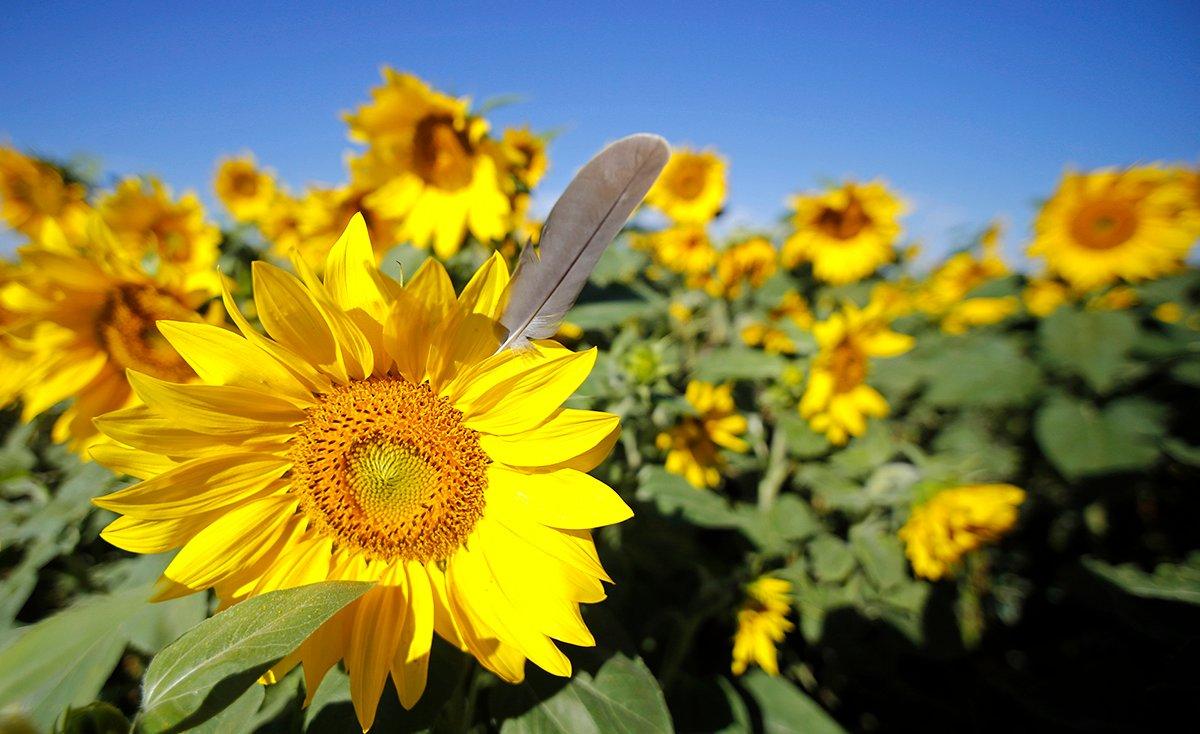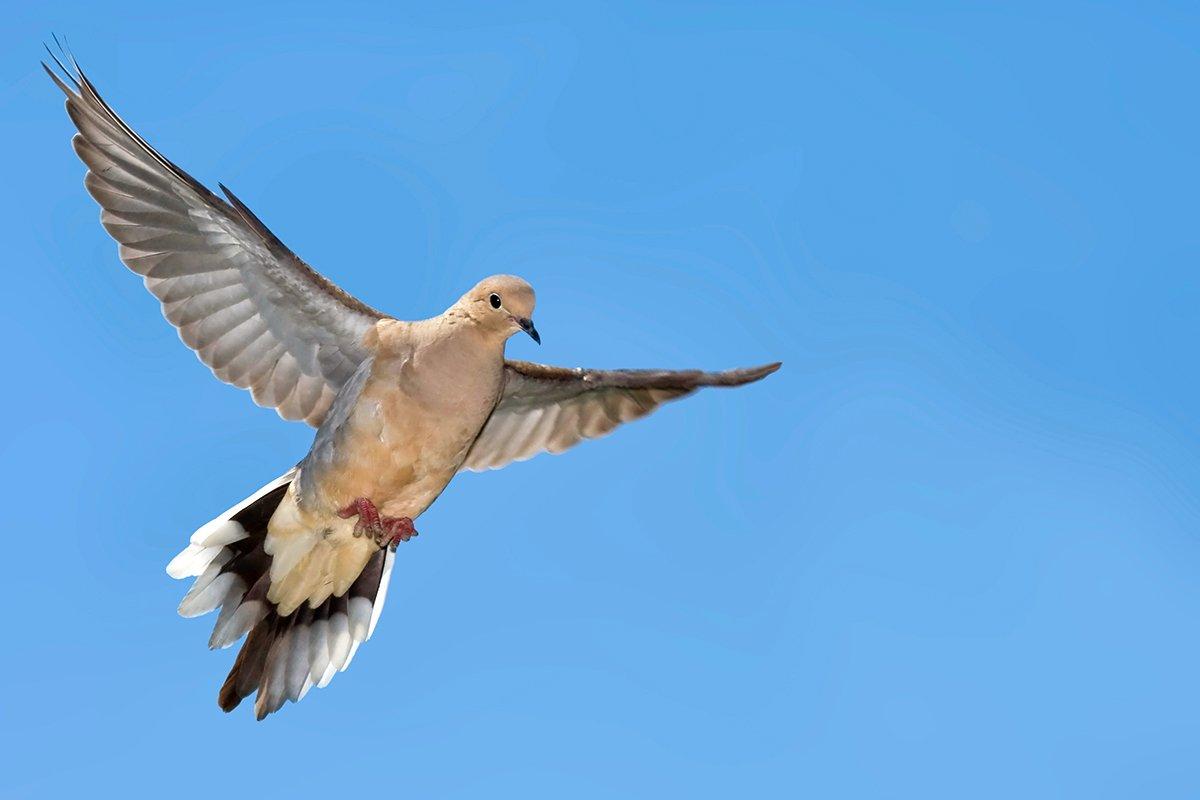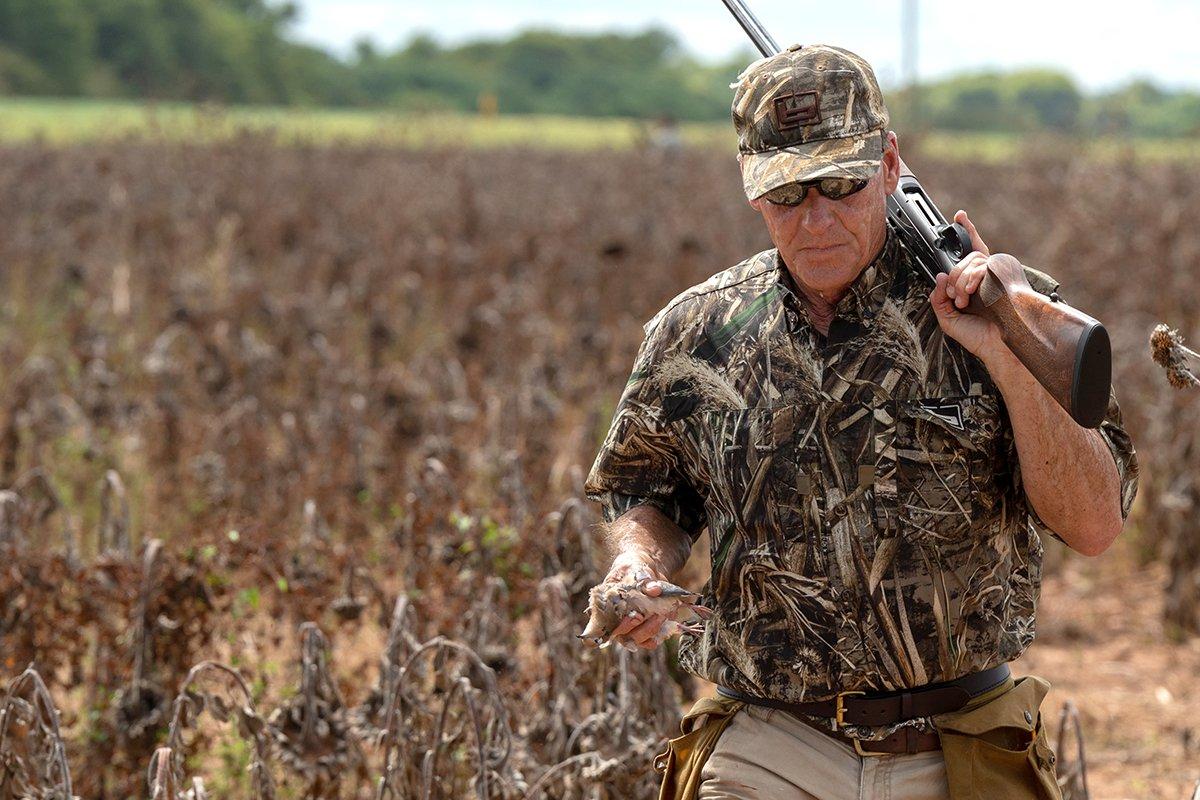Want to have a shoot with thousands of birds that people will talk about for years? Then check this out
There was about an hour of flight light left when I pulled into Kerry Wix's driveway. He met me in appropriate September attire, shorts and Crocs, and asked if I wanted to see the field before it got dark. Six acres of dead sunflower stalks and bare dirt doesn't look like much, unless you're a dove hunter. Birds were pitching into the field from all corners, but Wix still had the restlessness of a good dove field host. Fifteen buddies were due to arrive the next morning before sunup, and they'd be the collective judges of a summer's worth of work.
I hope it'll be good, Wix said. It should be good.
And it was. The doves slept in a bit, but shortly after sunrise, guns were popping regularly around the field, and by 10 a.m., shooters were beginning to shuffle back to their trucks with buckets of hulls and smashed shotshell boxes, limits of birds in hand. Wix putzed around the perimeter of the field on his UTV, offering waters to anyone who needed them. How's it been? he asked me.
Only thing I can ask is for you to make them fly slower, I told him with a smile. I'm a little rusty.
I've been to a bunch of dove shoots, but few that were any better. Though Wix filled his own limit, his highest achievement for the day was taking pride in a field full of birds and happy hunting buddies.
If you want a dove field like that, here's how to make it happen.
Find a Peak
Wix, a Tennessee native who works for Drake Waterfowl, has been planting dove fields for the past decade, and he said picking the right field location is the fundamental first step. Put simply, plant on a hill if you can.
A high-centered field will always produce more birds, Wix said. I started out planting bottomland fields, but I never pulled in as many birds as the guys planting on hills. The area needs all the other ingredients doves require, too, like water, gravel, roosting trees, dead trees, and good flyways for entering and leaving the field.
Two things I've found: Sunflowers don't grow well in wet ground, and I've had better shoots in wide-open fields.
— Chad Grubb, Kentucky Dove Hunter
Kentucky dove hunter Chad Grubb agrees. Grubb has also been planting dove fields for years, and he takes particular pride in a good stand of sunflowers. Field location is more important than size, he said.
Two things I've found: Sunflowers don't grow well in wet ground, and I've had better shoots in wide-open fields. I've done fields in tight places, with cover close by, and the birds would get into them, but as soon as you started shooting, they'd just go sit in the trees all around the field. If they have to cross open ground to get to the field, it seems to keep them flying better, and that makes for a better shoot.
(Don't Miss: 10 Tips for Better Dove Hunting)
Spring Prep
Both hunters begin by spraying their fields with herbicide in early May, and then mowing down the dead vegetation a couple of weeks later. Timing of that can vary, depending on where you live and when you're planning to shoot. Grubb and Wix both plant with opening week (first of September) in mind, but planting a little later might just mean delaying the hunt for a few weeks.
Grubb, who comes from a family of farmers, has access to commercial agriculture equipment. I plant my sunflowers alongside row crops, and with a six-row corn planter, it doesn't take long to plant a 2-1/2-acre field, he says. Big tractors, sprayers, and farming equipment make planting dove fields pretty easy. We usually just use leftover fertilizer from planting corn to finish our dove fields.
Wix doesn't farm row crops, so he takes a more traditional food-plotter's approach, with a 30-hp tractor and smaller, pick-up implements. After spraying and mowing, I drag an all-purpose plow across the field, he says. That thing has made it way easier, and for me, it's faster and easier than a bladed plow. It works great for regular food plots, too. After I bust that ground up a bit, I run a disk over it.
With a good seedbed made, Wix then broadcasts his sunflowers. I broadcast my fields, and then I culti-pack the seed, he says. I've got a buddy who drills his seed in, and you'll get bigger heads that way — but mine still come up fine and draw birds.
Summer Prep
Hopefully the stars align with your hard work and green thumb, and you have a bright yellow field full of sunflowers by the middle of July. But the work's not over yet. Doves want seed on the ground, and unlike waterfowl plots, dove fields can be legally manipulated to drop seed and make the setup more attractive to birds.
Grubb starts mowing strips into his sunflowers in early August, after the sunflower heads dry out. Wix watches for a stretch of hot, dry weather in August, and then he sprays his fields with a pre-emergent herbicide, which kills both the sunflower heads and the weeds. Bare dirt in a dove field is never a bad thing.
Both hunters like to supplement their sunflowers with nearby cereal grain fields, too. Grubb leaves a few acres of standing wheat or rye — left over from the previous year's cover crop — and he mows that in early August, and then disks it in later in the month.
Wix disks up an adjacent field, and then he sows in wheat for a fall food plot. But that step is one to take carefully — and in fact, Wix recommended calling a game warden to look at your field before the hunt begins.
You don't want a stray wheat seed ending up in your sunflower field, or to sow it heavier than the recommended rate for your area, he said. A mess-up like that could effectively turn your honey hole into a baited field, making it illegal to hunt. Giving a game warden a call and having him come look at your field gives peace of mind, Wix said. When you're working on dove fields, everything has to be by the book.
In the final weeks ahead of the shoot, Wix and Grubb mow a strip here and a strip there, to keep seed on the ground and doves trickling in. Flight traffic and doves sitting on nearby power lines and in trees give some indication to bird numbers — but you can always bet more doves are using a field than you're seeing at any given time.
It's crazy how many of them will get in there, Wix said. The first hunt is usually the best one, and that's always when I have the biggest crowd, but we shot my field a half dozen times last fall, and it was pretty good every time.
If you're going to plant a field like that, you'd best not be the antisocial type. Once word gets around, you can expect calls from long-lost buddies every year around the first of September. That, too, is part of the fun of a good dove field.










